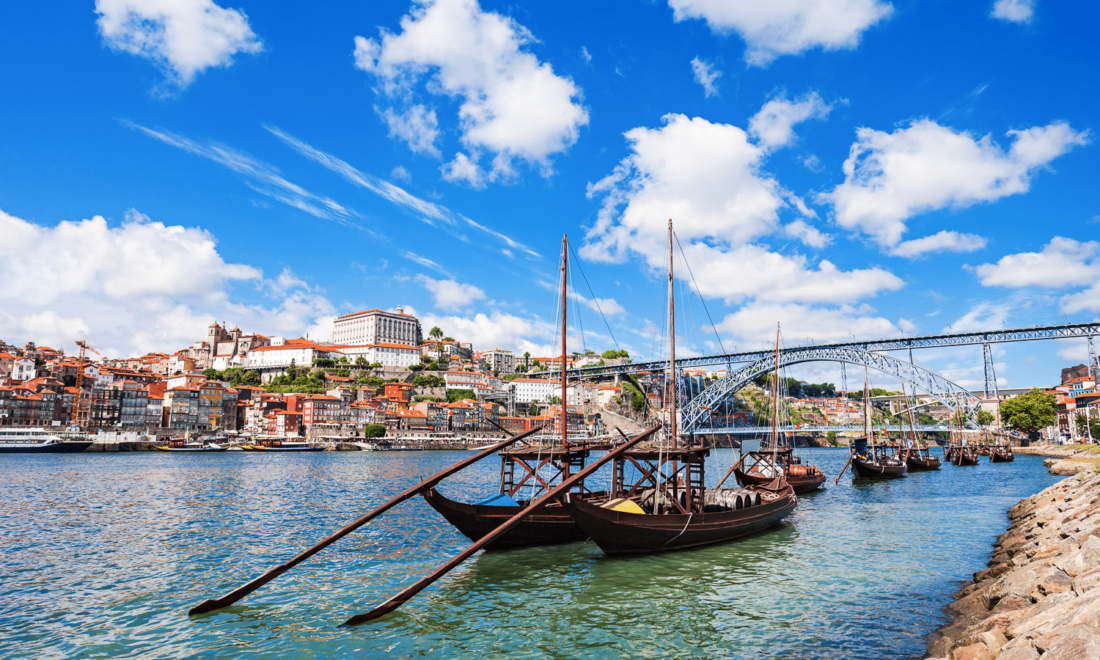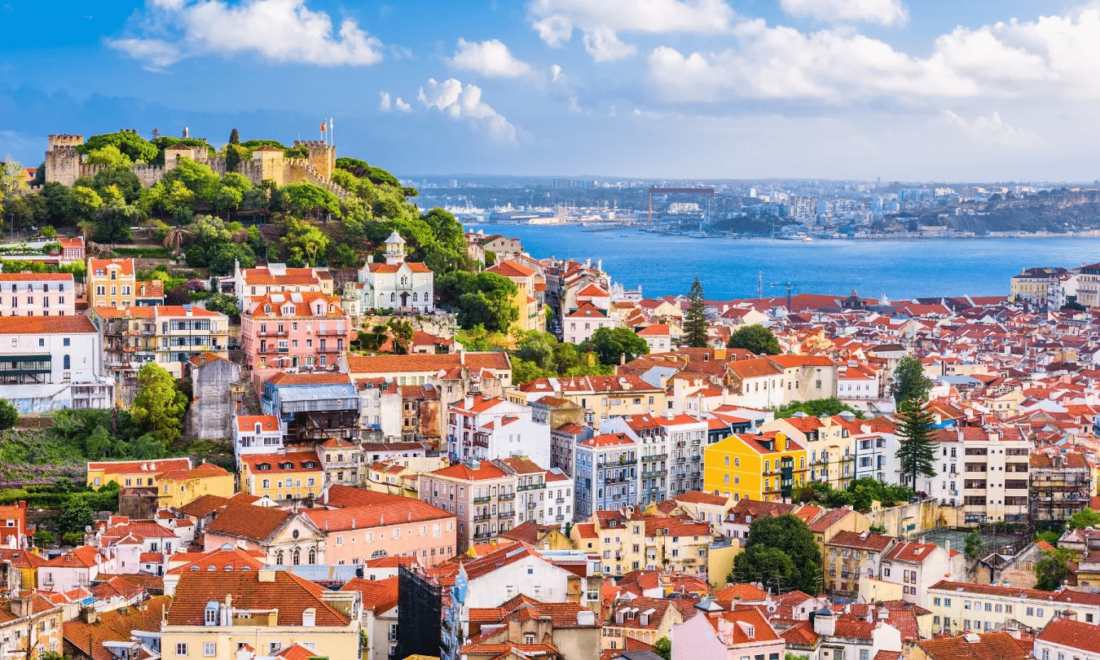This Porto Guide will show you why to visit this city, how to get there, when to see it, and where to stay, plus some insightful tips that would make planning easier. So, stick with us if you want to find out more.
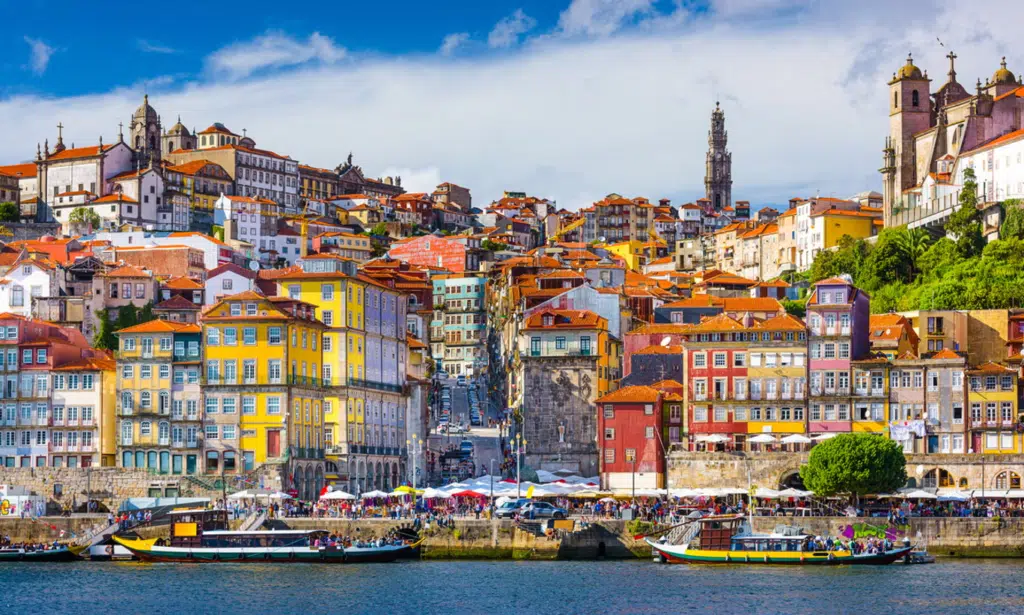
©Getty Images/iStockphoto
Our website includes affiliate links. So, remember that we may receive commissions when you click our links and make purchases. Please read our legal disclaimer document for more information about our Affiliate disclaimer and other disclaimers like the Fair-Use disclaimer.
Why visit Porto?
Porto is the second-largest city in Portugal, with 1.7 million people. More importantly, Forbes named it “The City to Visit This Year” in 2017. Therefore, it is a must-see European destination, perfect for a weekend break, and that’s why we decided to write Our Prto Guide in the first place.
Furthermore, the city is located in northern Portugal, by the outlet of the Douro River. It has a unique atmosphere, elegant neighborhoods, and large villas on narrow, cobbled streets. That’s why UNESCO classified it as a World Heritage Site in 1996.
Additionally, the historical center is small enough to explore on foot, wander down its alleyways full of history and nostalgia, take an evening walk along the Douro River, visit the lively Mercado do Bolhão, or sample its renowned Port wine. Most notably, it was here that they found modern Portugal back then in the 12th century; that’s why the country bears the city’s name.
How to get to Porto
Porto is a highly accessible city that welcomes regular flights across Europe, including low-cost carriers. But, if you prefer to take a different mode of transportation, you can rent a car and drive to Porto. Alternatively, if you’re visiting Lisbon before heading to Porto, you can take a high-speed train that connects both cities. We recommend reading our article about transport in Porto for more information.
But, if you’d like to see valuable flight deals, we recommend visiting Sky Scanner, but if you’d want to go by bus or train, you can find valuable deals in Omio.
When is the best time to visit Porto?
The best time to visit Porto is mid-spring, from April until October. May and September are the best months as it is still warm and sunny.
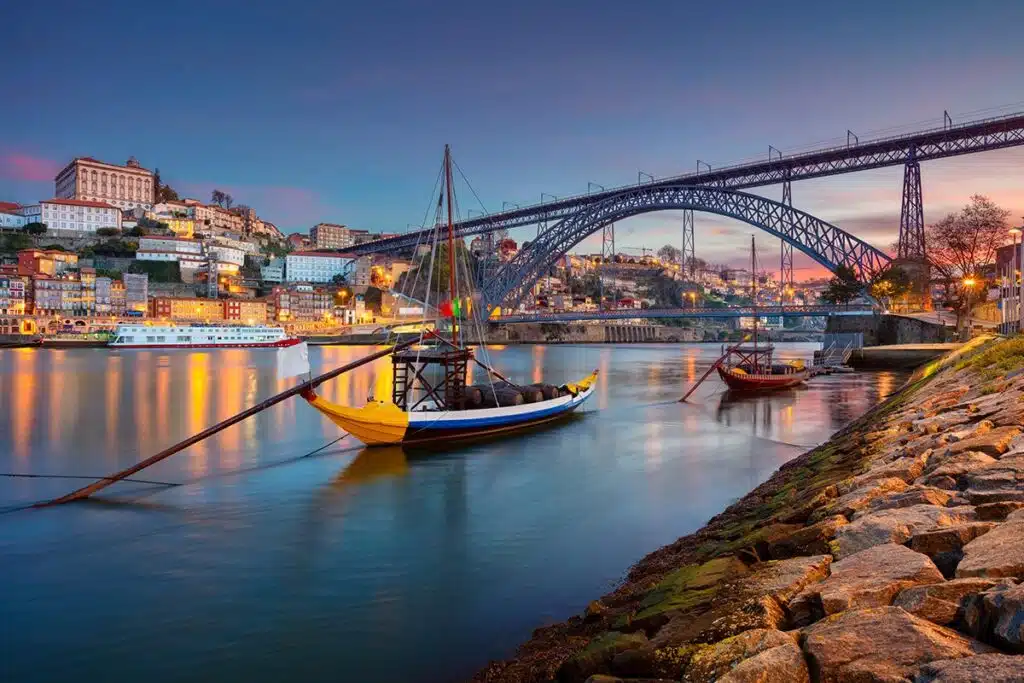
©hispanico.pl
Where to Stay in Porto
Porto is a city that you can easily visit on a budget. The food and accommodation are reasonably priced. You will definitely find a comfortable double room in a centrally located hotel at a reasonable cost.
The best areas to stay in Porto include Torre de los Clérigos, Praça da Liberdade, Praça Batalha, and Mercado do Bolhão. These areas are well-connected and near the city center.
If you prefer a quieter neighborhood, we strongly recommend looking for accommodation in Praça da Republica, which is a little further away from the heart of Porto but still a great option.
Note: We recommend using Booking.com when booking accommodation online. Additionally, we advise you to check not only the prices but also the comments, the distance from major attractions, and everything else that is important to you. As you know, sometimes more is less.
Douro’s Valleys & Vineyards is one of the most popular one-day trips from Porto.
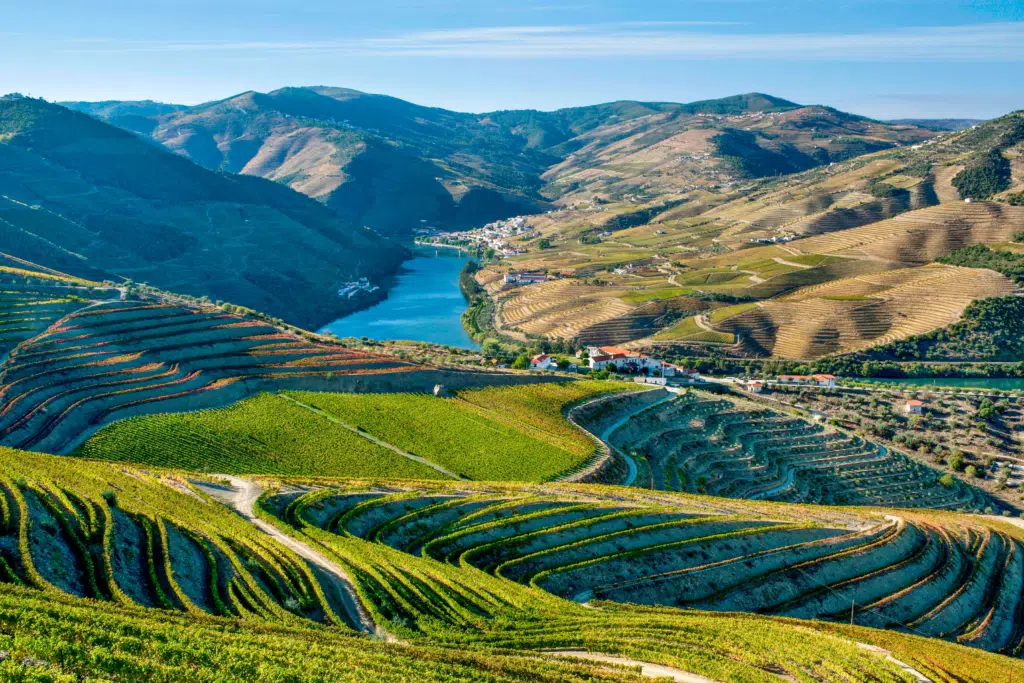
©vikingrivercruises.com
Tourist Attractions
The historic center of Porto is a popular attraction among visitors. This Porto Guide will introduce you to a few of them. To reach it, one can take a stroll along the Ribeira. This beautiful riverside promenade is home to several prominent landmarks, including the Bolsa Palace (which currently houses the Stock Exchange), the gorgeous San Francisco Church, and the Caso de Infante. The Porto Cathedral is the oldest structure in the city. Other notable landmarks and areas with numerous attractions include Avenida dos Aliados, Cordoaria, and Boavista. Although Porto doesn’t have an abundance of museums, there are several valuable establishments worth mentioning, such as the National Museum Soares dos Reis, the Portuguese Photography Center, the Museum of Contemporary Art, the Port Wine Museum, and the Tram Museum. The Lello Bookshop is also a must-visit destination, as it is considered one of the three finest bookshops in the world.
Note: If you’d like to learn more about the best Porto Attraction, you can read our related article, part of our Porto Guide. But if you want to check out the most popular organized tours, we recommend visiting Viator.com.
Events and Festivals at Porto
Firstly, the city hosts various musical and film festivals every year. The most prominent ones include the Fantasy Film Festival, the Festival of Celtic Music, the International Theater Festival of Iberian Expressions, the Festival of Portuguese Rock, and the International Folk Festival. However, the most popular events among locals are the St. John’s Festival and Queima das Fitas. While the latter is a traditional student celebration, the former involves a peculiar ritual of hitting people on the head with plastic mallets, which may seem strange to outsiders.

©Getty Images/iStockphoto
Traditional Portuguese cuisine at Porto
Porto is famous for its cuisine, including fresh fish, cod, tripe stew, and Francesinha sandwich. The city has a diverse gastronomy, with many excellent restaurants serving delicious food. Lunch is around 1 pm, and dinner is around 8 pm. Go early enough to restaurants, or you’ll find the kitchens closed. Portuguese soups and pastries are also worth trying. Remember to accompany your meals with a good glass of Porto wine.
Best areas to eat out
One of the most vibrant areas to dine out in Porto is Ribeira. The riverbank is teeming with charming little restaurants where you can savor the city’s authentic cuisine. As you indulge in the local delicacies, you can enjoy stunning views of Gaia, Douro, and Dom Luís I Bridge.
Other popular areas for dining are Praça da Liberdade, Avenida dos Aliados, and the surrounding vicinity of Torre dos Clérigos.
Porto Card
Get the Porto Card to enjoy discounts and free entry to Porto’s top museums, monuments, and tourist attractions. It also includes unlimited access to the city’s buses and metro. You can buy it at the airport or official tourist offices. However, if you purchase it with transport, you receive two passes valid for 24, 48, 72, or 92 hours. The travel pass activates automatically on first use. Remember to write the date and time on the card upon first use.
Note: You can read more about Porto Card and Public Transport in our Porto Transportation Guide.
How to Stay Safe in Porto
Porto is generally safe, but beware of petty theft, such as pickpocketing and bag snatching. Avoid crowded peak times and stay aware of your surroundings. Some of the safest areas in Porto are Ribeira, Foz do Douro, Boavista, and Cedofeita.
Is Porto safe to travel alone?
Firstly, it is a safe and exciting city for solo travelers. It offers numerous itineraries that you can complete on your own. More importantly, Portugal is also one of the safest travel destinations for women. Porto is an excellent option for solo female travelers.
Is Porto safe for LGBT+ travelers?
Most importantly, Porto and Lisbon are gay-friendly cities with many bars, clubs, and cafés. Portugal is a very welcoming country for the LGBTQ+ community and was one of the first to legalize gay marriage. It is also one of the safest places in the world to visit.
The Conclusion of Our Porto Guide
Porto is one of Europe’s most beautiful cities, so we strongly recommend visiting it. However, we are also aware that in this short article, we could only give you some information about this magnificent town; that’s why we invite you to share your valuable tips in the comments below.
Take a look at
References and sources:
Photo credits:
Feature photo credits: Getty Images/iStockphoto

